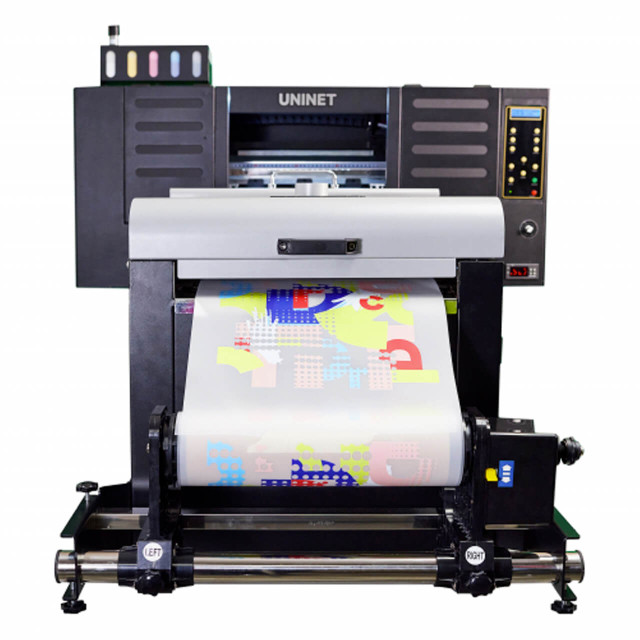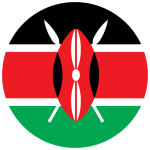What is DTF printing?
DTF printing, also known as Direct to Film printing, is a relatively new printing method that is gaining popularity in the garment printing industry. This method involves printing designs directly onto a special film, which is then heat transferred onto the garment. In this blog post, we will take a closer look at what DTF printing is, how it works, its advantages and disadvantages, and how it compares to other printing methods.
What is DTF Printing?
DTF printing is a digital printing method that uses special films to transfer designs onto various materials, especially fabrics for example T-shirts. It involves printing the design onto a special release film using a digital printer, then applying a layer of adhesive powder onto the printed design. The adhesive powder helps the ink to stick to the film and creates a transferable layer on top of the design.
The film with the design and adhesive powder is then placed onto the garment and heated with a heat press, which melts the adhesive powder, allowing the ink to transfer from the film to the garment. The final result is a high-quality, durable print that looks and feels great on the garment.
DTF printing is becoming more popular because it allows for detailed, high-quality designs to be printed onto a wide range of fabrics, including dark or colored fabrics, which are difficult to print on using other methods. Additionally, it is relatively easy to set up and does not require a lot of equipment, making it an affordable option for small and medium-sized businesses.
How does DTF Printing work?
The DTF printing process involves several steps, including preparing the design, printing the design onto the special film, applying adhesive powder, and heat transferring the design onto the garment. Let’s take a closer look at each step.
- Design preparation: The first step in DTF printing is to prepare the design. The design can be created using graphic design software, such as Adobe Illustrator or Photoshop. The design is then printed onto the special release film using a digital printer.
- Adhesive powder application: Once the design is printed, a layer of adhesive powder is applied onto the design. The powder is usually applied using a special machine that evenly distributes the powder onto the film.
- Heat transfer: After the adhesive powder is applied, the film with the design is placed onto the garment, and the two are heat transferred using a heat press. The heat press applies heat and pressure, which melts the adhesive powder, allowing the ink to transfer from the film to the garment.
Advantages of DTF Printing
- High-Quality Prints: DTF printing produces high-quality prints that are vibrant, durable, and long-lasting. The prints are resistant to fading, cracking, and peeling, even after multiple washes.
- Versatile: DTF printing can be used to print on a wide range of fabrics, including cotton, polyester, nylon, and more. It can also be used to print on dark or colored fabrics, which are difficult to print on using other methods.
- Easy to Set Up: DTF printing is relatively easy to set up and does not require a lot of equipment. It is a great option for small and medium-sized businesses that want to start printing their designs on garments.
- Cost-Effective: DTF printing is a cost-effective option for businesses because it does not require a lot of equipment or specialized skills. It can also be used to print small or large batches of garments, making it ideal for businesses of all sizes.

How does DTF Printing compare to other printing methods?
DTF printing is relatively new compared to other printing methods, such as screen printing, DTG printing, and sublimation printing. Each printing method has its advantages and disadvantages, and the choice of printing method depends on several factors, including the type of design, the fabric, the quantity of garments, and the budget.
Screen printing is a popular method for printing large quantities of garments. It involves creating a stencil of the design and using it to apply ink onto the fabric. Screen printing produces vibrant, long-lasting prints but can be expensive and time-consuming for small batches of garments.
DTG printing is a digital printing method that uses a specialized printer to print the design directly onto the garment. It is a popular option for small batches of garments and can produce detailed, high-quality prints. However, it is limited in its ability to print on dark or colored fabrics.
Sublimation printing involves printing the design onto a special transfer paper, which is then heat transferred onto the fabric. It is a popular option for printing on polyester fabrics such as reflector jackets and produces vibrant, long-lasting prints. However, it is limited in its ability to print on non-polyester fabrics and can be expensive for small quantities.
Conclusion
DTF printing is a versatile, cost-effective printing method that produces high-quality, durable prints on a wide range of fabrics, including dark or colored fabrics. While it has some limitations, such as a limited color range and longer production time, it is a great option for small and medium-sized businesses that want to start printing their designs on garments. When choosing a printing method, it is important to consider several factors, including the type of design, the fabric, the quantity of garments, and the budget.

